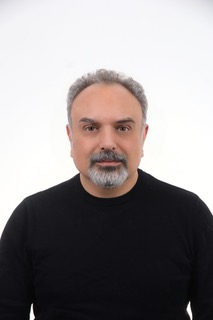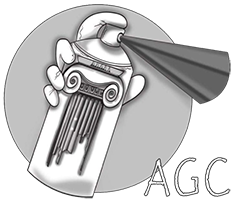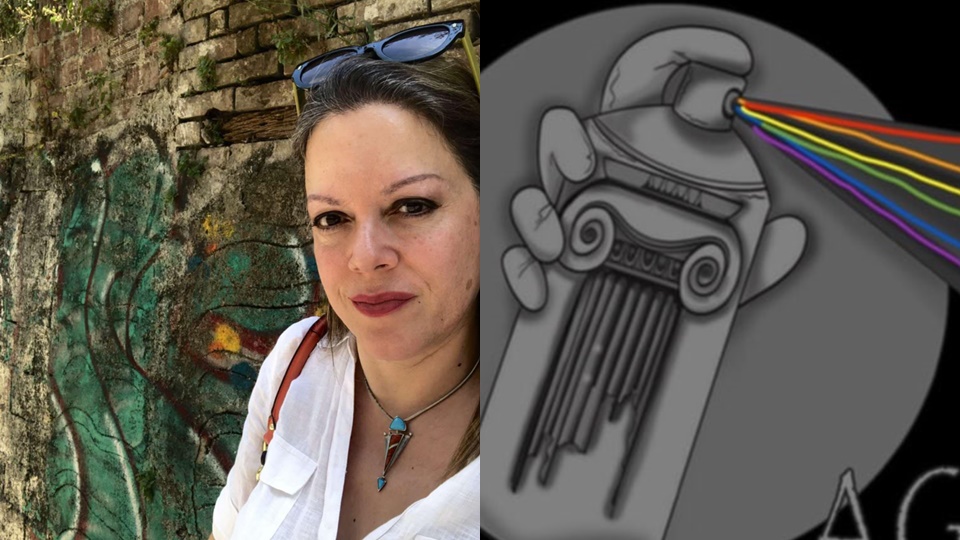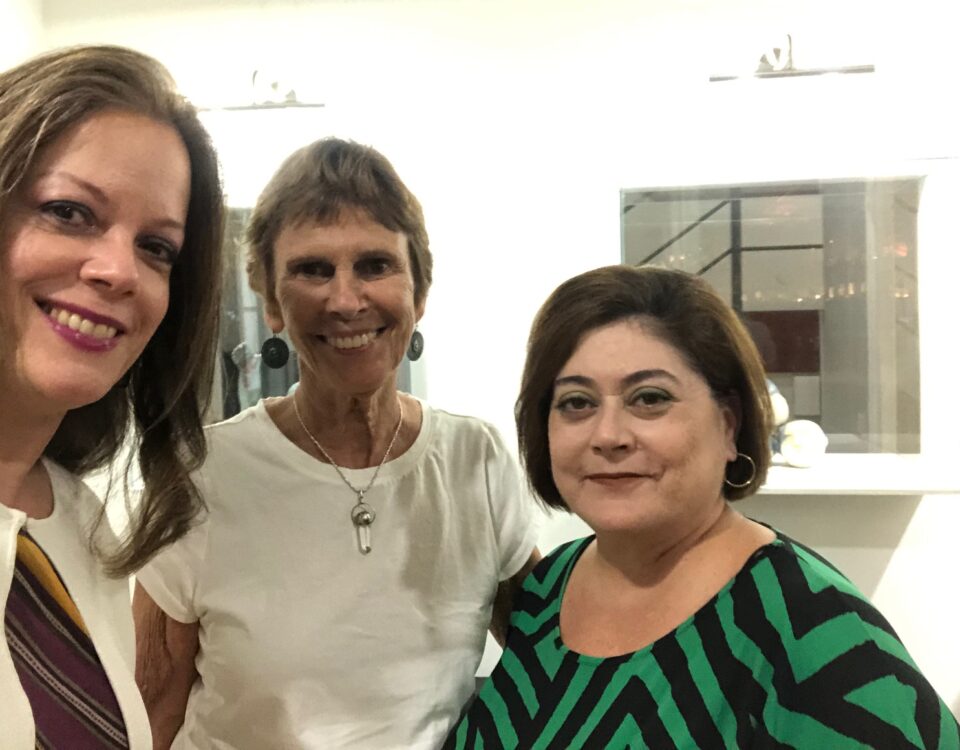Vasilis Manousakis

Interview with Thanos Raftopoulos
2 October 2025
Graffiti in buildings in the neighbourhood of Neapolis
7 October 2025
“The Greatest Art of All is the Art of Life”
A pleasant discussion with the versatile Vasilis Manousakis (author, counselor, professor)
Literature meets cinema, teaching in colleges and prisons lights the path, graffiti comes in somewhere, and it all leads to mental health counseling.
AGC: Vasili, do you also collect graffiti and street art from Athens centre.
B: Yes, of course. It is an activity that began spontaneously many years ago, as I was walking in Barcelona and saw on a closed store window the phrase, “Motion is life.” All of this composes a cityscape and gives us the message that our cities are alive and not dull and lifeless. It’s a motto I firmly believe in, so I took a photo of it to use in a text. Since then, guided by the texts I write on social media, I’ve been collecting words, phrases, and drawings from walls wherever I go.
I believe that what is written on the walls is often both clever and inventive, but it mainly expresses emotional states. Lyrics from songs, messages to someone, drawings on electicity or phone boxes, all compose a landscape of the city and give us the message that our cities are alive and not dull and lifeless.
AGC: What is the thread that unites the various aspects of your activities?
B: Certainly creativity and human beings. The relationships of people, their evolution, their path, the pursuit of the best, the love and acceptance are what make you flourish. Whether in my various classes or in the sessions in my office, my guiding principle is human development and the path towards their brighter side.
AGC: Creative writing in colleges – creative writing in prisons.
B: Yes, the Korydallos prison was added more recently, thanks to the chance of my acquaintance with the excellent professor Alkistis Kontogiannis of the University of Peloponnese. There I had a unique experience. Sharing and the concept of spiritual giving govern my courses everywhere, and the American college is a place that offers me the environment to create together with my students. The Korydallos Prison and the 30 prisoners I had in the last course, showed me the essence of creative writing, which is none other than the liberation (an important word in prison) of ourselves, our emotions, our talent and our need for expression and redemption.
AGC: Your latest work, the first creative writing workshop, was inspired by the graffiti of the historic city center. How did the idea come about?
B: The idea was conceived by my worthy former colleagues, Kalliopi Kountouri and Barbara Kondilis, and I couldn’t help but agree. However, I truly believe that the idea probably existed in me when I started traveling around cities and photographing walls, as I mentioned earlier.
Now, I am given the opportunity for them to take root and give birth to what they were originally intended to give birth to: a dialogue with their creators. Those who write on the walls, and we will try to respond in this workshop. I have a photo of a wall in Neo Psychiko that says, “You owe me a dance.” I hope that the texts that will be written will repay this dance.
AGC: Are you carving out paths or are they “taking you” there? At what stage of your journey do you find yourself currently?
B: Jalaluddin Rumi said, “As you walk the path, the path appears.”
For me, the path of creativity and its teaching appeared very early on and I followed it. I charted a path that included what I wanted to become. I did not achieve everything when I tried. But I persisted and returned there at different stages of my life. Currently, I am walking a path where I enjoy what I do, I accept beautiful proposals like the “graffiti and creative writing” seminar, and I aspire to continue caring and writing about evolution of human beings and their relationships as long as I can. I believe that I will endure, because creative actions give me life too. So “everything is a path”, beautiful or ugly, easy or difficult, as long as it is our path and we are grateful and proud of our choices.


